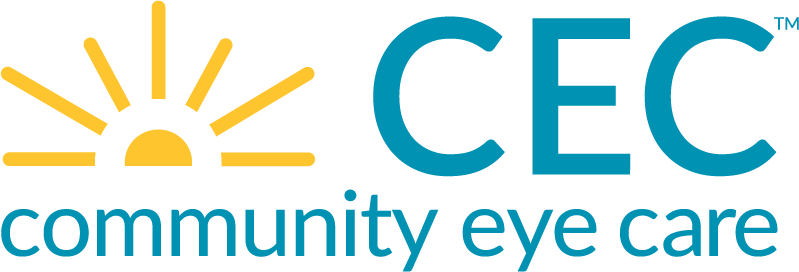
According to the CDC, diabetes affects over 38 million Americans, with many more likely undiagnosed. Living with diabetes means managing blood sugar levels daily, but many may not realize it also means keeping an eye on your…eyes! Vision complications are common, but the good news is that with knowledge and regular check-ups, you can take control of your eye health.
Diabetes and Vision: Why Your Eyes Need Special Attention
When you think of diabetes, you might picture blood sugar levels, insulin injections, and dietary adjustments. Yet, the eyes are also profoundly impacted by this condition. The reason lies in the way diabetes can damage tiny blood vessels throughout the body. Our eyes contain some of the most delicate and essential blood vessels, especially within the retina, which allows us to see detail and color.
Over time, high blood sugar can lead to several serious eye problems, from mild blurriness to severe, vision-altering conditions. For instance, diabetic retinopathy is one of the most common issues; it happens when high blood sugar damages the blood vessels in the retina. Another concern is diabetic macular edema, which causes swelling in the macula, leading to distorted vision. Both of these conditions can have life-changing consequences, especially if they aren’t treated early.
Other eye-related risks include glaucoma and cataracts, both of which occur more frequently in people with diabetes. Fortunately, regular monitoring and prompt treatment make it possible to catch and manage these conditions before they lead to significant vision loss.
Symptoms of Diabetes-Related Eye Issues
With diabetes, changes to your vision can be subtle and easy to miss at first. You might experience occasional blurriness or notice that reading or seeing objects up close becomes a bit harder. While these changes may seem minor, they’re worth taking seriously. Here are some of the top symptoms to watch for:
- Blurry Vision: If your blood sugar is high, the shape of your eye’s lens can change, causing blurry vision that may come and go. However, consistent blurriness could indicate something more serious, like diabetic retinopathy.
- Floaters and Flashing Lights: Seeing floating spots or flashing lights in your vision can be a sign of retinal damage. If you experience these symptoms, it’s essential to see an eye care professional immediately.
- Difficulty Seeing in Low Light: If dimly lit environments seem even darker or if you’re struggling more at night, this can be a warning sign of diabetes-related vision issues.
- Vision Loss in One Eye or Both Eyes: Losing vision suddenly or gradually in one or both eyes should never be ignored. Seek medical attention if this occurs, as it could indicate advanced diabetic eye disease.
Though not all of these symptoms directly mean you have a severe eye condition, they’re worth mentioning to your eye doctor as soon as they appear. Awareness is key to staying ahead of diabetes-related vision problems, and early intervention can make a world of difference.
Annual Eye Exams: Your Best Line of Defense
There’s no better way to protect your vision when you have diabetes than by committing to an annual comprehensive eye exam. Unlike regular vision checks, these exams allow your eye doctor to check not only how well you can see but also the overall health of your eyes. By looking at your retina and optic nerve, your doctor can spot early signs of diabetic eye disease even if you’re not noticing symptoms yet.
The process is simple and typically painless. Your doctor will dilate your pupils to get a closer look inside your eyes, helping them identify any changes or abnormalities that may have developed since your last exam. If they spot signs of diabetic retinopathy, macular edema, or other issues, they can recommend treatments to slow or even prevent further vision loss.
These exams become especially crucial as we get older. Diabetes increases your risk of age-related eye conditions like glaucoma and cataracts, so a yearly check-up helps you stay on top of potential risks.
Proactive Steps to Preserve Your Vision
Along with routine exams, you can take several proactive steps to protect your eyesight. Lifestyle adjustments play a significant role in keeping blood sugar levels stable, which in turn helps your eye health. For example:
- Maintain a balanced diet: Incorporate vegetables, lean proteins, and whole grains into your meals to keep your blood sugar levels more stable.
- Exercise regularly: Physical activity can help lower blood sugar and increase blood circulation to your eyes.
- Manage your medications and blood sugar: Keep close tabs on your blood sugar levels and take medications as directed by your doctor. This consistency helps reduce your risk of vision complications.
- Avoid smoking: Smoking raises blood sugar levels and increases your risk of diabetic complications, including eye disease.
Taking a proactive approach to your health can reduce the chances of experiencing diabetic vision problems and set you up for a lifetime of clearer sight.
Keep Your Vision Clear with Awareness and Action
Diabetes brings unique challenges, but with the right knowledge and tools, you can protect your vision and quality of life. From understanding potential risks to recognizing early symptoms, each step brings you closer to safeguarding your eye health. Remember, a quick annual visit to your eye doctor and a few lifestyle adjustments can go a long way toward keeping your eyes healthy and your vision clear. Learn more about the fight to end diabetes at the American Diabetes Association.
Information received through CEC vision care channels is for informational purposes only and does not constitute medical advice, medical recommendations, diagnosis, or treatment. Always seek the advice of your eye doctor, physician, or another qualified health provider with any questions you may have regarding a medical condition.
CEC is a wholly-owned subsidiary of VSP Vision.
Sources: American Academy of Ophthalmology (AAO), The Mayo Clinic, The Vision Council (TVC), National Eye Institute (NEI), and Centers for Disease Control and Prevention (CDC).
Back to All

